Across northern Italy
The trains from the East used to arrive in Trieste’s Campo Marzio train station. However, due to the changes in the political situation and the borders since its construction, the number of trains decreased and so the station was closed and all trains to and from Trieste now use Centrale station. Campo Marzio has been turned into a beautiful railway museum which is unfortunately permanently closed.
The train from Vienna has arrived in Trieste
Again I have booked a room very close to the station Trieste Centrale. Only after I get the confirmation it turns out that it is one of these anonymous places where you receive a code to get in. It takes some time to find the entrance; it is in an old apartment block in a busy road above the station. I am supposed to ring the door and if nobody answers, call a number. Mysteriously, the door opens after I have pressed the button for the third time. I climb up a dark, worn out staircase. The faded walls probably never have been repainted and the original color has turned into a shiny dark brown with a yellow or greenish hue. Only little light comes in through the dirty glass of the windows.
I enter the pin to a box and after some shaking about it opens and indeed contains a key for the front door, the apartment, my room and the adjacent bathroom. The room is more than basic: a cupboard, a chair, a table, a bed and a fan. The bedside lamps are unsuitable for reading. There are old fashioned double windows but I do not see how the outer window could be opened. The noise, heat and dust from the street makes it wiser to not open the window anyway.
It is still hot when I leave my room for a tour of the city. Like most coastal places the climate in Trieste is very humid. I have arrived sweating, I had a shower and I start sweating again even before I have left the building.
Like so much in the Roman empire Trieste was most important during the time of emperor Trajan in the 2nd century AD. There are still numerous Roman ruins, for example the remains of the Forum next to the cathedral San Guisto. Most of its columns ended up in the construction of the cathedral.
With the fall of the western roman empire Ostrogoths, Lombards, Franks and the Byzantine empire repeatedly conquered and sacked the city. The town's population, around 12,000 during Roman times, declined to such a degree that that number was only reached again in the 1760s.
Roofs of the medieval town, 1991
Around 1295 the city became a free municipality. This raised the ambitions of the Republic of Venice, which wanted to get the hegemony of the Adriatic Sea. After a Venetian siege of Trieste the town was occupied by the Venetians from November 1369 to June 1380. As a consequence, the city placed itself under the protection of the Duke of Austria. That was the beginning of a period of more than 500 years in which the city became Austria’s biggest and only sea-port.
Trieste has preserved much of the medieval city. Città Vecchia, which is almost entirely closed to traffic, preserves many narrow and crooked streets with typical medieval houses.
The rise of the city accelerated during the rein of empress Maria Theresa. It became one of the main European ports. Between 1758 and 1769 defensive buildings and a fort were built. The Stock Exchange, the Palace of the Lieutenancy, a department store, the first shipyard and the Theresian neighborhood followed.
The loss of the greater part of Friuli, especially the Veneto (with the ports and qualified maritime personnel), further increased the economic and strategic importance of Trieste for the empire. The city became, in the last decades of the 19th century, the fourth biggest urban area in the Austro-Hungarian Empire (after Vienna, Budapest and Prague). The importance of the town for the Habsburg empire is reflected in the architecture. Half of the city was built during the Austro-Hungarian period in Neoclassical, Art Nouveau, Eclectic and Liberty styles resembling the architecture of the Vienna Ringstrasse.
Hotel Savoia Excelsior Palace
From this period also dates Trieste's Piazza Unità d'Italia, Unfortunately Europe’s biggest sea front square is still separated from the sea by a busy noisy road.
The importance of Trieste is also reflected by the early completion of the Südbahn railroad to Vienna in 1857. 1400 km of railway via the Semmering pass allowed to travel via Vienna to destinations as far as Lviv in Ukraine. Since the railway approached Trieste via Vila Opicina at a height of 300 m, it descends to Trieste Centrale station via a long detour to the north which today still is used by the modern trains to Vienna via Ljubljana. Soon the station was also used by trains to the newly opened lines to Venice, Udine and later the Wocheinerbahn to Villach via Jesenice (see part back 6).
In 1886 a railway was built from Trieste to the South, to connect to the railway to Istria and the port of Pula, the Trieste-Erpelle railway. For this line to the south a new station, Trieste Sant'Andrea was built. It was also connected to Opicina via a direct line circling around the town.
Another connection to Opicina is via the Opicina Tramway, a hybrid between a tramway and funicular railway. It climbs up the hill from the city center in beautiful blue and white cars.
The former Riva railway in 1991
The stations of Centrale and Sant’Andrea were connected by the Riva railway along the sea front and town centert. The line was meant to be an interim solution but lasted until 1981. In that year the Galleria di Circonvallazione, a 5.7-kilometre (3.5 mi) railway tunnel route to the east of the city was built to allow freight trains a direct access to the port.
Trieste was a truly cosmopolitan city. In 1910, out of a total of 229,510 inhabitants, 51.8% spoke Italian, 24.8% Slovenian and only 5.2% German. There were 16.8% foreign nationals including 29,639 Italian and 3,773 Hungarian citizens.
The variety was reflected in the literary scene in town. Italian and Slovenian authors met authors writing in German or other languages. Famous authors like Rainer Maria Rilke (1875–1926), Richard Francis Burton (1821–1890), James Joyce (1882–1941), D. H. Lawrence (1885–1930), Jan Morris (1926–2020) or Stendhal (1783–1842) stayed and wrote in Trieste. There still is a bar in the center where Joyce and others met.
The mixture of an Italian and Slavic population and an Austrian centralist government was not without tensions. For sure the situation was not improved by the politics of Emperor Franz Joseph I, who, in 1866, a few months after Austria had lost the Veneto and Friuli to Italy at the end of the Third War of Italian Independence, imposed a policy to "... Germanise and Slavonians in the strongest terms and without scruple ...» all Italian regions still part of his empire: Trentino, Dalmatia, Venezia Giulia.
However, the pressure to reunite Trieste with Italy rose. Finally, after the victory of the Allies in the first World War, Trieste was annexed by Italy. The incorporation into the Kingdom of Italy was finalized in the Treaty of Rapallo in 1922. However, Trieste now was a border town with limited hinterland. A long decline began.
Trieste Campo Marzio station in 1991 with former Austrian engine type 728 at FS
The Italian government initiated a rigorous Italization of place names. The station of Trieste Sant'Andrea was changed into Trieste Campo Marzio. However, after the first world war traffic was limited to local trains and a few connections to Istria.
After the second world war Yugoslavia claimed the area around Trieste. The Yugoslav army occupied the town for 40 days. Afterwards a joint British-US military administration ruled the town until 1947, when the Paris Peace Treaty established the Free Territory of Trieste. The territory was divided in an American occupied Zone A including the town proper and a Yugoslav Zone B. Only in 1954 the majority of Zone A was incorporated into Italy and Zone B and 4 unfortunate villages of Zone A into Yugoslavia.
The new border situation eventually caused the end of Trieste Campo Marzio station. Although local traffic remained for another 10 years it was closed in 1960. It was abandoned. Only in 1984 a group of volunteers succeeded in using a part of the building to create the Trieste Campo Marzio railway museum. It especially focuses on exhibits of the railroads of the different countries with lines into Trieste. There is engine 728 022 (JZ 25.022), a typical Austrian construction built by WLF in 1920, 229 170, built in 1916, another example of the Austrian suburban engine also displayed in the museum in Ljubljana, and JZ 33 107, another of those German locomotives built in great numbers during WW II and left allover Europe after the war.
With an Italian friend I had the chance to visit his home town in the summer of 1991. At the time I also visited the museum, which now unfortunately is closed for renovation.
At the time the borders to the backcountry had just opened. It was a unique opportunity to see the old Trieste and partake in the life of an Italian family. Each lunch time my friend’s mother had an opulent three course lunch ready for us. It also was great to retreat to the cool, tiled apartment during the lunch time heat. In the evening we met friends at the Piazza della Borsa. The proud drivers put down the car in the middle of the square, leaned at their machina, elbows resting on the roof. For sunset they drove us to Miramare, where we paraded up and down the promenade like other groups of smartly dressed young people. We had a drink in one of the cafes. Being a German, I wanted to order another one, but paradeing was more important.
With the opening of the borders and the disintegration of Yugoslavia the old question of ethnic minorities arose again. Italian groups requested the unification of parts of collapsing Yugoslavia into Italy. These were parts fascist Italy had occupied along the Dalmatian coast under Mussolini. But eventually the changes came to Trieste from another corner….
In 2010 Trieste was voted one of the most underrated cities in Europe by lonely planet. While there were practically no tourists in town in 1991, today you hear more German in the alleys of the historic part of town than Italian. The town has regained its backcountry. The economy seems to be on the rise and the old town is beautifully restored. Nevertheless, the population is decreasing since years.
Needless to say that the breakfast in my anonymous pension was meager and consisted mainly of conserved bakery wrapped in lots of plastic. A good B&B is pleasant because of the communication with the owners and between the guest. Here there were no owners and since there was no real breakfast room everybody took his share back into the room, so I did not meet the other. Fortunately there were a couple of Austrian girls who showed me the functioning of the coffee machine. At least the anonymity gave me the opportunity to take some of the aseptic plastic packages along for the long day on the train.
For many years these classic brown electric engines were the backbone of electric traction of FS
To make some progress I have invested in a reservation for the Red Arrow to Venice and Milan this morning. Back in 1991 the rail traffic still was relying on famous rail cars called “cigar” for the obvious reason that they were brown and had the shape of a cigar, and beautiful brown, angular electric double engines. Of course the carriages had windows that could be opened to let the hot air blow through your hair.
Obviously those Frecciarossas are much faster. The air-condition works well, but the windows are permanently closed. Taking pictures of the beautiful coastline you see from the train north of Trieste is made difficult. No surprise that everybody sticks to his phone.
I wonder how these people can talk on their phones for such a long time. I sit at a table where a woman joins me in Brescia without greeting or any sign of even recognizing my presence. However, she is much more communicative on her phone. She manages to make three phone calls in 40 min between Brescia and Milano Centrale with barely a break. There she leaves like she has arrived.
In 1714, after the Spanish war of Succession Habsburg Austria had inherited the Duchy of Milan from the Spanish branch of the family. Another branch of the Dynasty had ruled the Duchy of Mantua since 1708. In 1797 little Napoleon conquered the northern Italian states and the Duchies together with the Venetian Republic and other northern Italian cities became the Napoleonic Cisalpine Republic with Milan as its Capital. After Napoleon’s defeat, the Habsburgs claimed back their former lands and in the treaty of Vienna of 1815 this area in Northern Italy became Austrian crown lands as kingdom of Lombardy Venetia. Kings were the Austrian emperors Francis I from 1815-1835, Ferdinand I from 1835 – 1848 and finally Franz Josef I after 1848. The Austrian emperors suddenly were in the possession of important towns like Milan, Venice, Padua, Mantua, Udina, Pavia, Cremona, Trento or Bolzano.
The coast near Trieste in 1991
On the Frecciarossa to Milan the interrail app on my phone suddenly had forgotten all the data. My pass, trip, everything was gone. The only helpful measure in that case is a complete reinstallation of the app. I tried to do that as long as I had the WLAN of the Frecciarossa, but the download speed was so low that it took more than half an hour to finish just in time before we arrived in Milano Centrale. It then takes even more time until the app eventually has found back the data stored on the server. In my case it had found the data but could not reestablish the connection between the trip I had done so far and the pass. Eventually I had to create a completely new trip and I had two identical passes in the app. Anyway, I was glad that I managed to get it working again just in time before I boarded the train north to Lugano.
The railway north of Trieste from the window of a Frecciarossa
The heat is unbearable when I leave the Frecciarossa in Milano Centrale. In Italy the platforms of departing trains are only announced 15-20 minutes before departure. All the waiting passengers gather in the vicinity of the departure boards to wait for the announcement of their train. Centrale is a terminus and the space behind the end of the platforms is packed with people. There are no benches anywhere. I wait somewhere at the end of a couple of tracks where I think the trains in the direction of Switzerland will depart. The heat is made even more unbearable by the noise since all the engines work at full power to keep the air-conditioning of the trains running. There is no space to sit.
Finally I retreat to a spot on one of the empty platforms. Since nobody knows where his train will leave the platforms without departing trains are deserted and quiet. At the same time they allow to observe the arriving and departing trains and the rush of the passengers. Why is anybody on his way to a train always in a hurry? In particular the passengers on the long distance trains in Italy, where reservations are mandatory, have their seats and all the time to board. In the heat every movement immediately causes bursts of sweating.
I am not the only one. A Scottish guy walks up and down the platform with his camera. On one of the pillars carrying the enormous canopy above the station a plaque discloses the manufacturer and the year of construction 1909. However, the station only was officially opened in 1931. The project became increasingly complex and majestic since after Mussolini became Prime Minister, he wanted the station to be representative for the power of the Fascist regime. Regarding passengers Milano Centrale is the second busiest railway station in Italy and by volume the largest railway station in Europe.
Before the 16th century the Viscontis and their successors had owned both Lago Maggiore and Lago di Lugano with the cities of Locarno and Lugano. In the 16th century the Swiss, who wanted to have control of the access route to the Gotthard pass, managed to get the possession of the valleys south of the Pass to just north of the gates of Como. Lugano and Locarno therefore have old, typical Italian town centers including former palaces of the Viscontis.
Eventually the information panel announces the departure of a long Swiss train from platform 7. The train crosses the Italian – Swiss border. I had inspected a thorough border check but there was nothing but an announcement that passengers should be in the possession of valid travel documents. So interesting enough nowadays crossing a border by train inside the EU, for example from Austria to Switzerland, is much more fuss than to the non-EU country Switzerland.
Swiss train to Locarno at Milano Centrale
On the train a group of Italian ragazzi travels towards a weekend in Switzerland. In their conversation they boast about the type and number of drinks they have consumed in the various clubs they use to visit. Then it turns to soccer and the power of certain types of cars. I think back to our time in Trieste long ago. Besides me nobody drank alcohol and the topics were much more interesting and varied. Is it by accident or did the times really change?
Funicular at Lugano
The old part of town in Lugano is linked to the station by a modern funicular which sets you back 1.50 Sfr. Considering the still smeltering heat it is a deal. Hotels are expensive in Lugano, and the one I eventually have booked in the pedestrian zone is the most basic I had during the whole trip. It even lacks a table so that there is no space to put down my laptop and write. No question of spending any time there except for sleeping or having a shower. There is no reading light, no comfy chair and no view.
Lago di Lugano
What the hotel lacks in furniture the town spoils in luxury. It seems like all the prejudices about Switzerland come true in one town center. There is either a bank or a financial advisor at every street corner. Buildings renovated to characterless perfection house all kinds of expensive brands you can imagine. A posh guy gives his little kid a ride on the passenger seat of a roaring open Porsche. It is highly satisfying to see all these luxury cars touring round town willing to pay a fortune for a parking spot but there is none.
Eventually I find a pleasant park along the lakeshore where a band plays Latin music. There are free fountains for drinking water everywhere. At the far end of the park a mouth of a river serves as a popular spot for swimming and sun bathing.
Since I don’t feel like going back to my meager hotel room I settle down at the main square, order a pint of beer for 9 Sfr and unpack my book. The young waiter is exceptionally friendly. Beautiful and sparingly dressed women distract my attention. They are the only distraction because there are no mosquitos and no music. The night falls but the flood light illuminating the piazza is still strong enough to read my book and enjoy the view.
In the next valley to the west is the next lake, Lago Maggiore. Like Lago di Lugano and Lago di Como it is shared by Switzerland and Italy. It’s main town on the Swiss end of the lake is Locarno.
Right from the beginning I like Locarno much more than Lugano. One of the reasons is that I find a hotel close to the station with a balcony facing the lake. The pier for the steamer linking the lake side towns is right in front of the hotel. There is some event going on tonight and therefore the street along the water front is closed. It is quiet and people stroll along the shore of the lake.
The friendly receptionist at the hotel speaks perfect Italian, German, English and French. So far I had the impression that few Italian Swiss bother with learning the other Swiss languages. Or don’t bother to adapt to the visitors by using their languages. Switzerland is a modern and highly mobile county. I ask myself how many of the Swiss population actually move out of their language zone to work in an area where they speak the other language. I don’t have the impression that anybody in the German speaking part bothers to speak French or in the French or Italian speaking part bother to speak German.
Locarno has a pleasant old town with a great market square, the piazza grande. It is lined with the typical Lombard mansions with arcades on the ground floor hiding the modern shops. Unfortunately the square and the center of the old town are still disfigured by all the equipment they had set up for the event. It is a Monday and they are busy dismantling the stages and stalls.
The spectacular viaduct of the Funicular in Locarno
Locarno also has got its funicular. But in contrast to the short, modern one in Lugano this one is an attraction on its own. It was built in 1906 to provide access to the pilgrimage monastery Madonna del Sasso and the village of Orselina. Over a distance of 825 m it climbs 173 m. Part of the route are across a full scale viaduct and a tunnel. There are two intermediate stops on demand, to give access to the monastery and the higher neighborhoods of Locarno. The viaduct and upper part of the line are hidden in a lush forest. The palm trees and trickling water reminds of a tropical rain forest.
The santuario de la Madonna del Sasso sits on an outcrop above the forest. From the terrace next to the church there is a commanding view of Locarno and the lake. The monastery was found by Franciscan friar Bartolomeo de Ivrea who sighted a Marian apparition on August 15th 1480. The magnificent church is decorated with fascinating frescoes and votive tablets. The monastery still is the home of Capuchin friars.
My hotel has a restaurant and as a resident you get a 10% reduction. After I have finished my excellent dinner I notice that they have installed a couple of artificial islands on the lake at the entrance to the bay of Locarno. The access to the bay is blocked by boats flashing blue lights. The number of people strolling along the promenade is increasing. Many have brought chairs. I find a table at one of the lake side cafe’s and enjoy half an hour of fireworks which they have set up on the special occasion of my visit.
On the other side of the Gotthard Pass is Switzerland. It is hard to believe, but the origin of the Habsburg empire lies in a castle perched above the village of Habsburg not far from the town of Brugg in Switzerland.
In 2016 the 57 km long Gotthard base tunnel was opened after 17 years of construction. It is the world’s longest tunnel. Fortunately the SBB did not, like their northern neighbors would have done, immediately close the pass route. The old railway across the pass and through the summit tunnel of 15 km between Airolo and Göschenen opened in 1882 continues to be used for local traffic. After the accident in the Gotthard Base tunnel on August 10th 2023 the west tube of the tunnel is still closed. To be able to fully use the eastern tube for freight trains all passenger trains go across the old pass route via Góschenen.
I board one of the smart Pendolino trains of the SBB. There is a bar where a guy is waiting for customers. There is only coffee in paper cups. But the windows of the empty bistro offer a perfect view of the spectacular pass route.
From Bellinzona in the south at a height of 241 m the railway has to climb to a height of 1151 m to reach the tunnel. It is the second highest standard gauge railway in Switzerland. The extreme difference in altitude requires several loops and 7 spirals. Altogether there are 36 tunnels totaling 31 km. The new tunnel crosses the alps 500 m lower.
For the workers the construction of the first Gotthard tunnel was a nightmare. 200 workers alone were killed by the compressed air-driven trains that carried excavated material out of the tunnel. Other hazards were rock slides, dynamite explosions and a few drowned due to flooding. In 1875, the workforce went on strike. The police force sent to suppress the strike killed four workers.
In the beginning the Gotthard line was operated with steam engines. In 1922 the route was electrified. Both in the steam era and for the electric traction specific engines were constructed for the line. The most famous are the “elephant” 4 cylinder steam engines and the “crocodile” electrics. The latter set an example for a design which was copied in many other countries for 20 years.
Crocodile electric engine especially developed for the Gotthard Pass
It is worth the effort to leave the train at Göschenen and make a short detour to Andermatt. The Räthische Bahn (now called Matterhorn-Gotthard Bahn) still has some carriages with windows to open. In a spectacular route mostly in tunnels and under snow galleries you can glimpse at the old road leading up to the summit along raging waters. The torrent is still crossed by the bridges built for the medieval pass route where travelers had to go up to 2106 m to cross the mountains.
A teenager school class boards the train. Carrying sport bags and full of energy they settle down at one end of the train. Their teachers settle down next to me, as far away as possible from their protégés. From the distance they try to ignore how they ruin each other and the train. When one of the pupils comes to complain and take refuge he is rudely rebuffed.
North of the Alps it rains. In fact it is one of the worst downpours ever. When I arrive at the hotel Terminus across the road at the station at 2.30 the doors are open but there is nobody there. On the reception desk a note says that the receptionist will be available again at 4 pm. Fortunately they have lockers at the station. They are operated with the mobile phone. Surprisingly it works and is easy to understand.
View across the valley of the Aare, the original Habsburg lands
I discover that there is a bus to Habsburg. But it is still pouring cats and dogs. Next to the bus stop is a supermarket in a modern building. Without a lot of expectations I walk in and ask for paraplus. And they have got them. As is normal in such cases the rain stops as soon as I have opened it. But it will come back later with renewed power….
In the medieval times the area between the river Reuss and Aare was of great strategic importance. In the 11th and 12th centuries power was symbolized by castles and monasteries. Therefore Radebot the first Habsburg built the Habsburg castle around 1020/30 on the Wülpelsberg close to Brugg. In 1027 they founded the monastery of Muri. Others like those in Sackingen, Sankt Blasien, Beromünster, Einsiedeln came under Habsburg protection.
The name of the castle soon became the name of the family. Around 1100, Otto II was the first to call himself Count of Habsburg. His descendants lived here in the ancestral castle until around 1230. Afterwards it was given to serving nobles.
The monastery of Muri
In 1415 the Swiss Confederates conquered the Aargau. But while the Habsburgs suffered defeats in their Swiss homelands they shifted their focus to the east along the Danube. From the middle of the 15th century, the Habsburgs again intervened powerfully in major European politics: they returned to the royal throne and increased their power in the east, in Italy and the Netherlands, becoming a real world power. From 1438 to 1740, all emperors of the Holy Roman Empire were Habsburgs.
When 1027 Radebot found the monastery of Muri around 26 km south of Habsburg it was settled with Benedictine monks. When the Swiss confederency conquered the area in 1415 they also took over the patronage of the monastery.
The monastery burnt down, was sacked and rebuilt various times. In 1701 emperor Leopold I brought the Habsburgs back to Muri by declaring it a princely Abbey. However with the French revolution a long decline started and after 814 years the monastery was dissolved in 1841.
To the right of the altar a memorial reminds of the founders, Radebot of Habsburg and Ita of Lorraine. Of course these baroque statues were carved much later and it is doubtful whether they bear any resemblance to the actual looks of Radebot and Ita.
While the monks never came back the monastery complex turned to new uses. The church became the catholic village church of Muri. A benedictine hospice was set up in the buildings and the cloister now houses three musea.
In 1971 a vault for the Habsburg family was set up. All Habsburg emperors are buried in the Capucine Vault in the Hofburg in Vienna. After the dissolution of the Habsburg empire another site for the tombs of the family had to be found. While the bodies of the last emperor, Karl, and his wife, Zita, who were disposed of in 1918, are still buried in Vienna, their hearts are in a container in the vault in Muri. All the other members of the family who died afterwards without having an official position are also buried in Muri.
The bust of the last Habsburg emperor in the Crypt and on the altar the containers with his and Zitas hearts
Members of the Habsburg family regularly come back to Muri. When old empress Zita came back one day there was a new koster. When he denied her access to the vault he introduced herself as "I am Zita, empress of Austria". Where he replied: "when you are an empress, I am the king of France".
When I enter the museum to see the Vault and the Cloister the automatic doors are not functioning and the woman at the reception recommends to first visit the museum of medical books. Reluctantly I enter the room since I only expect to see a couple of rather boring glass cases displaying books. But the exhibition is spectacular. There are indeed the expected glass cases with rare books. But on a screen next to them you can actually leaf through their digital copies, enlarge pages and thus study them much more closely than you could with the originals. Among others, there is a copy of Dürer’s works on anatomy for artists, De humano corporis fabrica libri sepem of Andreas Vesalius of 1555, a Botanica of Kniphof of 1764 and the Philosophia magna of Paracelsus of 1567 and his Der grossen Wundartzeney of 1563. In Dürer’s book you can change the proportions of the drawings to create different faces and skeletal proportions.
The top floor houses an exhibition of paintings of the painter of Caspar Wolf. Wolf, born in Muri, became famous for his realistic paintings of Swiss landscapes. His works are so photographic that they can easily be compared with how these landscapes look like today.
In the evening in Brugg the rain helps dispersing the crowds of the life viewing event of the EC quarter final soccer game between Switzerland and England. The water in the Aare river rises. In other parts of Switzerland landslides block roads and tracks. The huge amount of water is a good opportunity to see the water falls in the Yosemite valley of Switzerland at Lauterbrunnen.
Together with a big part of the population of India, Japan, China and the United states and their roller cases we take the train from Interlaken to Lauterbrunnen. And we are lucky. While we walk into the valley the rain takes a break. I chat to an American visitor from Washington DC: he complains that the weather doesn’t allow good pictures. He has never been to Yosemite.
The Habsburg ruled the kingdom of Lombardy-Venetia for less than 50 years. In the course of the resorgimento, the movement for the unification and independence of Italy the imperial army lost most of northern Italy. In 1859 after the Second Italian War of Independence Lombardy was ceded to France and transferred to the Kingdom of Piemont. The remaining territory was incorporated into the Kingdom of Italy in 1866 after the Third Italian War of Independence. Only the region around Trieste and southern Tyrole remained under Austrian rule until 1918.
One of the waterfalls in Lauterbrunnen
Sources:
Link to previous post:







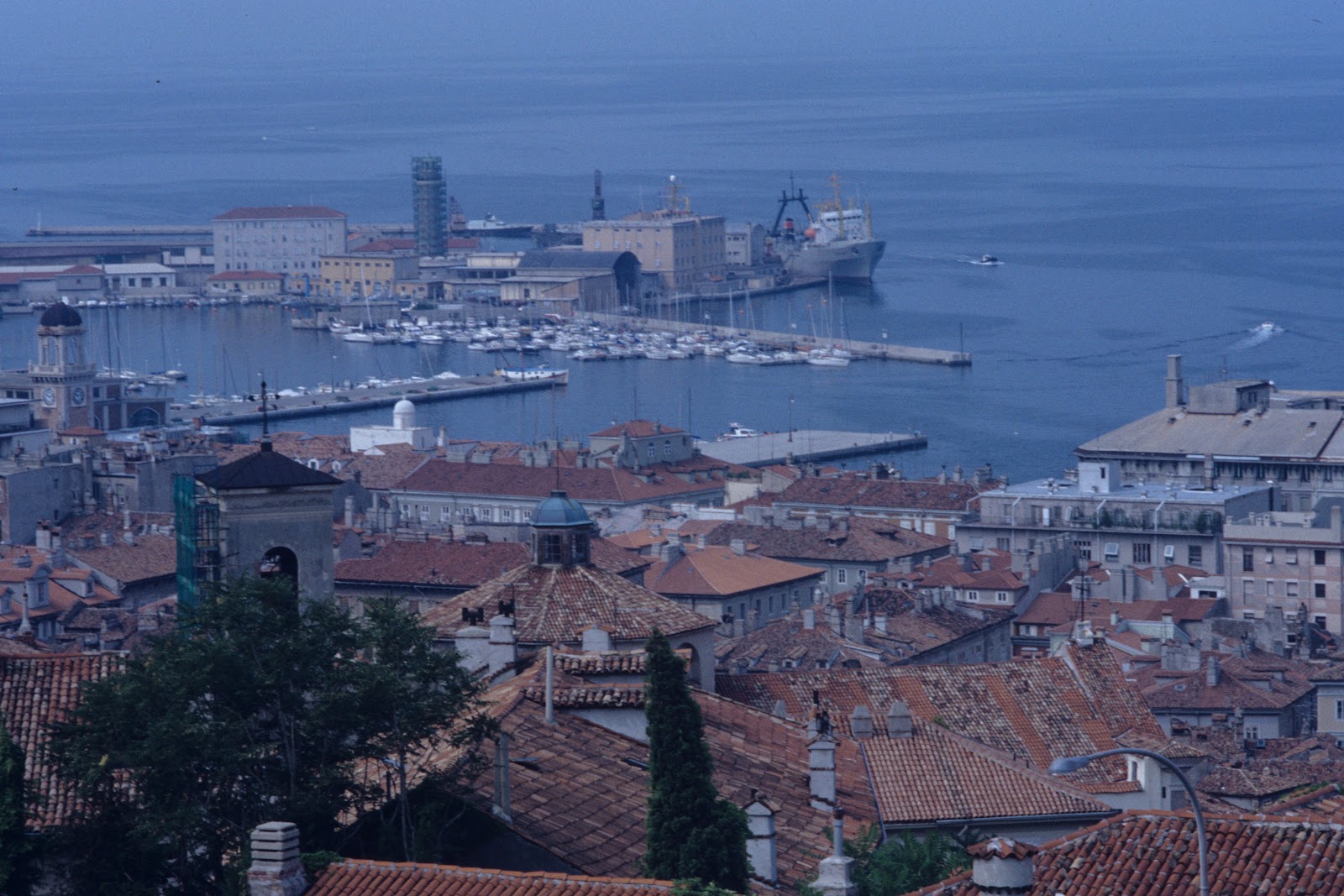



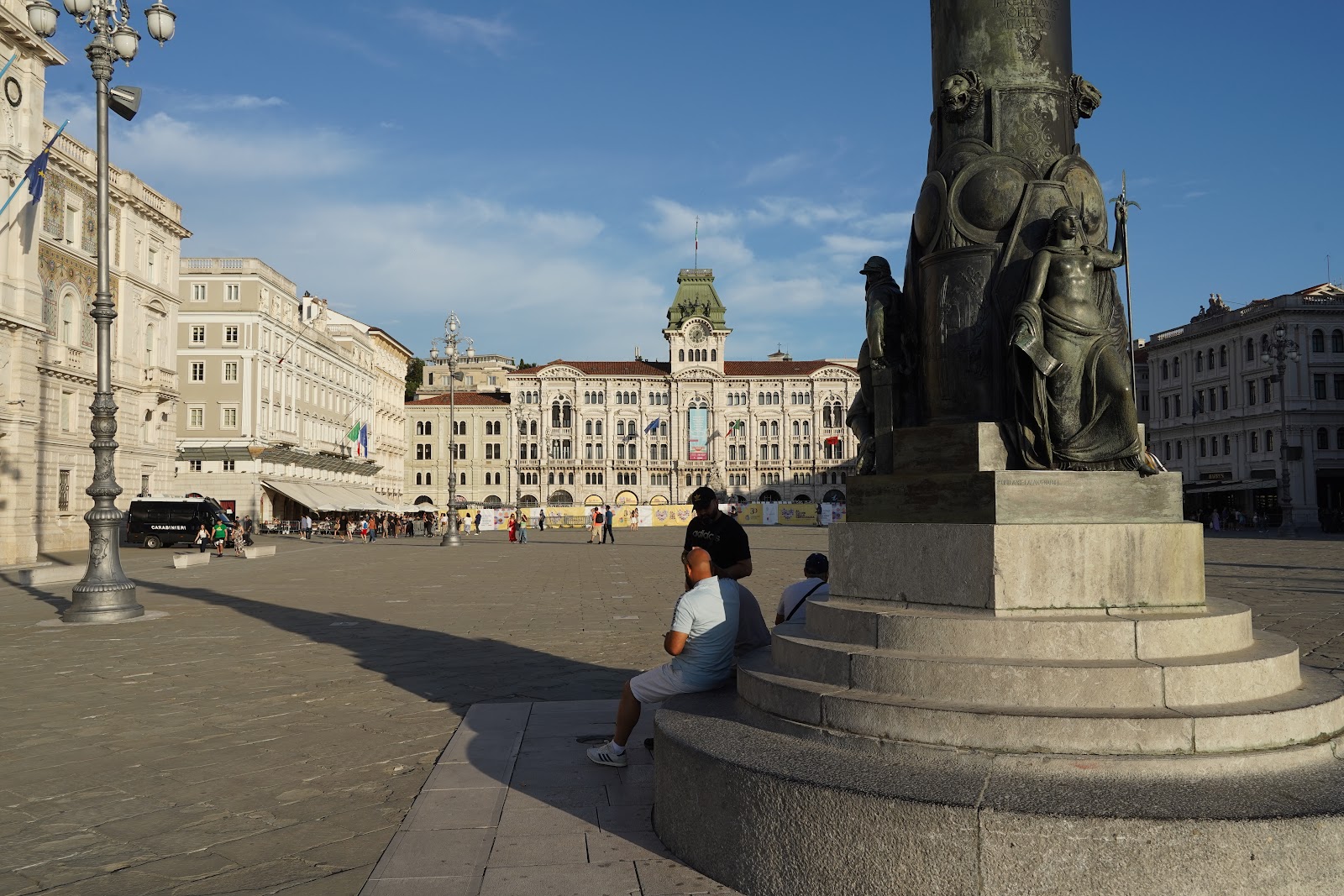



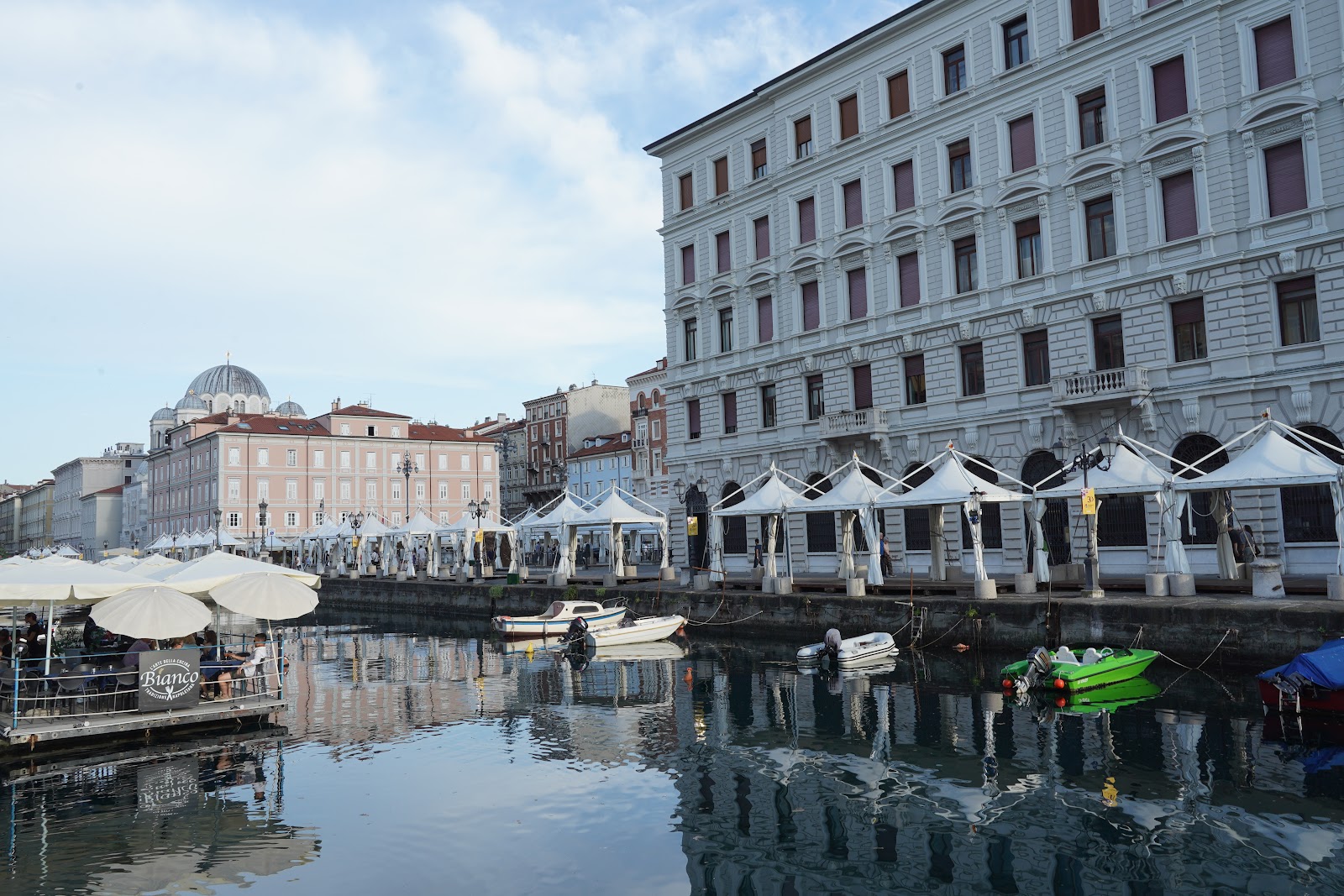





















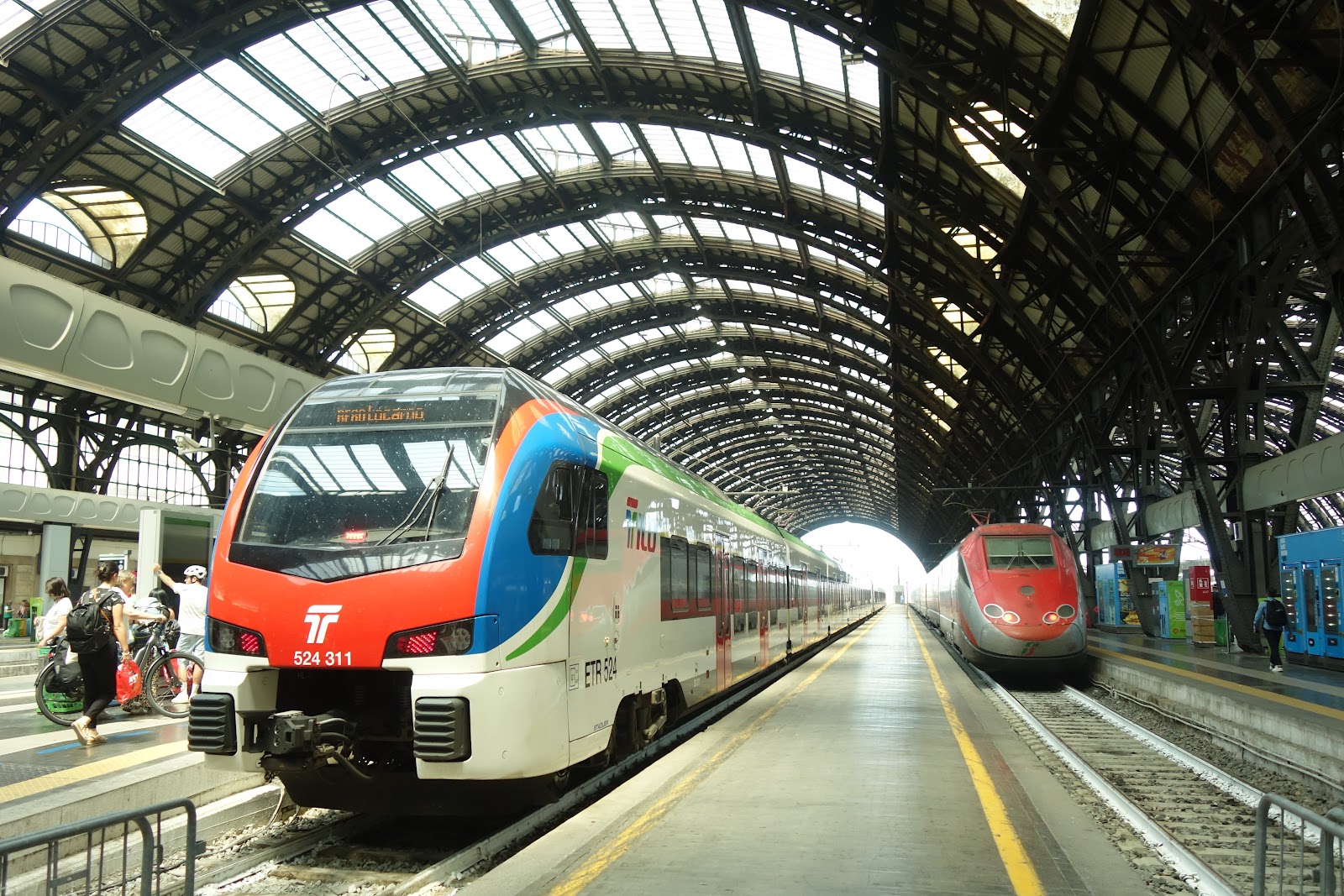

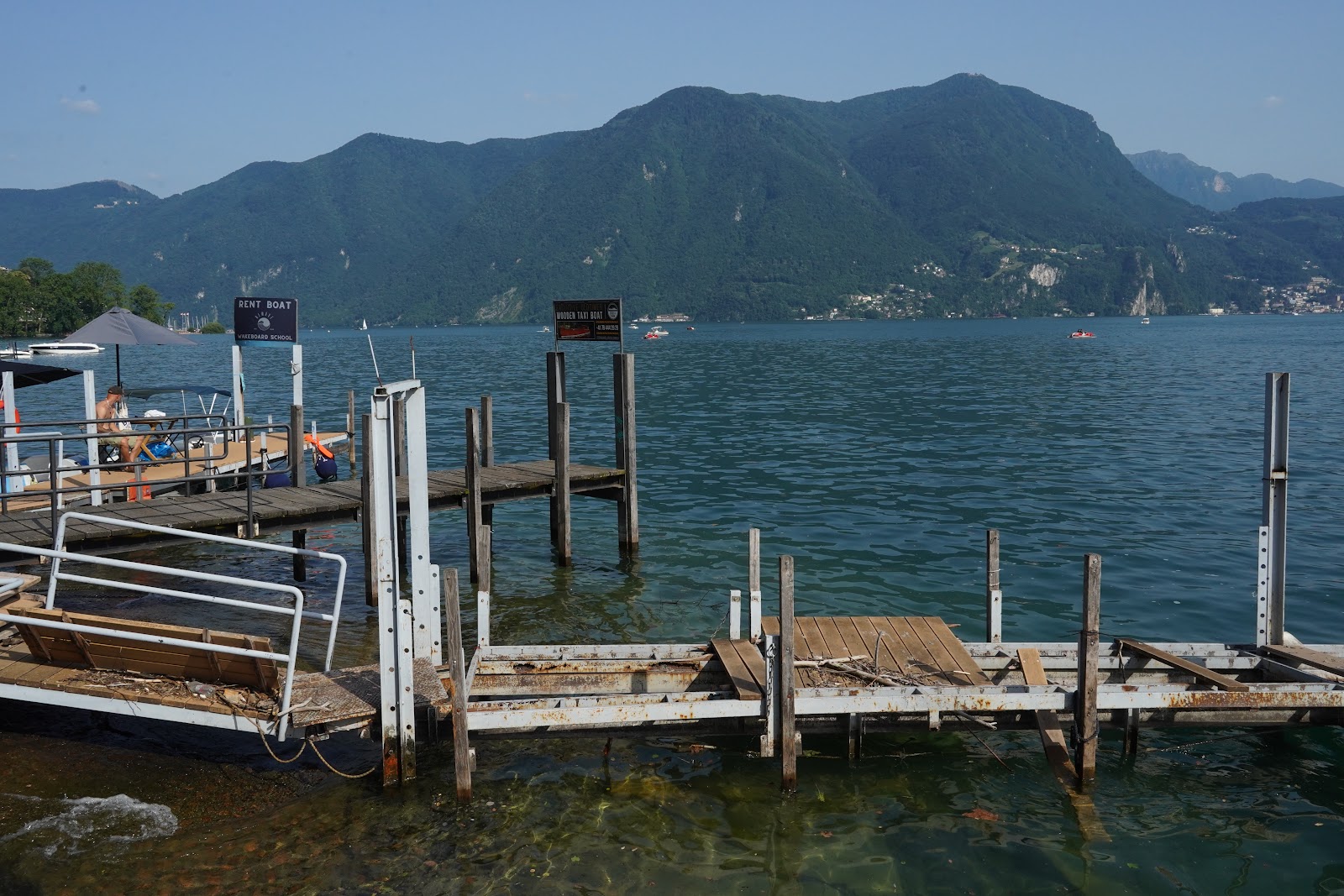




















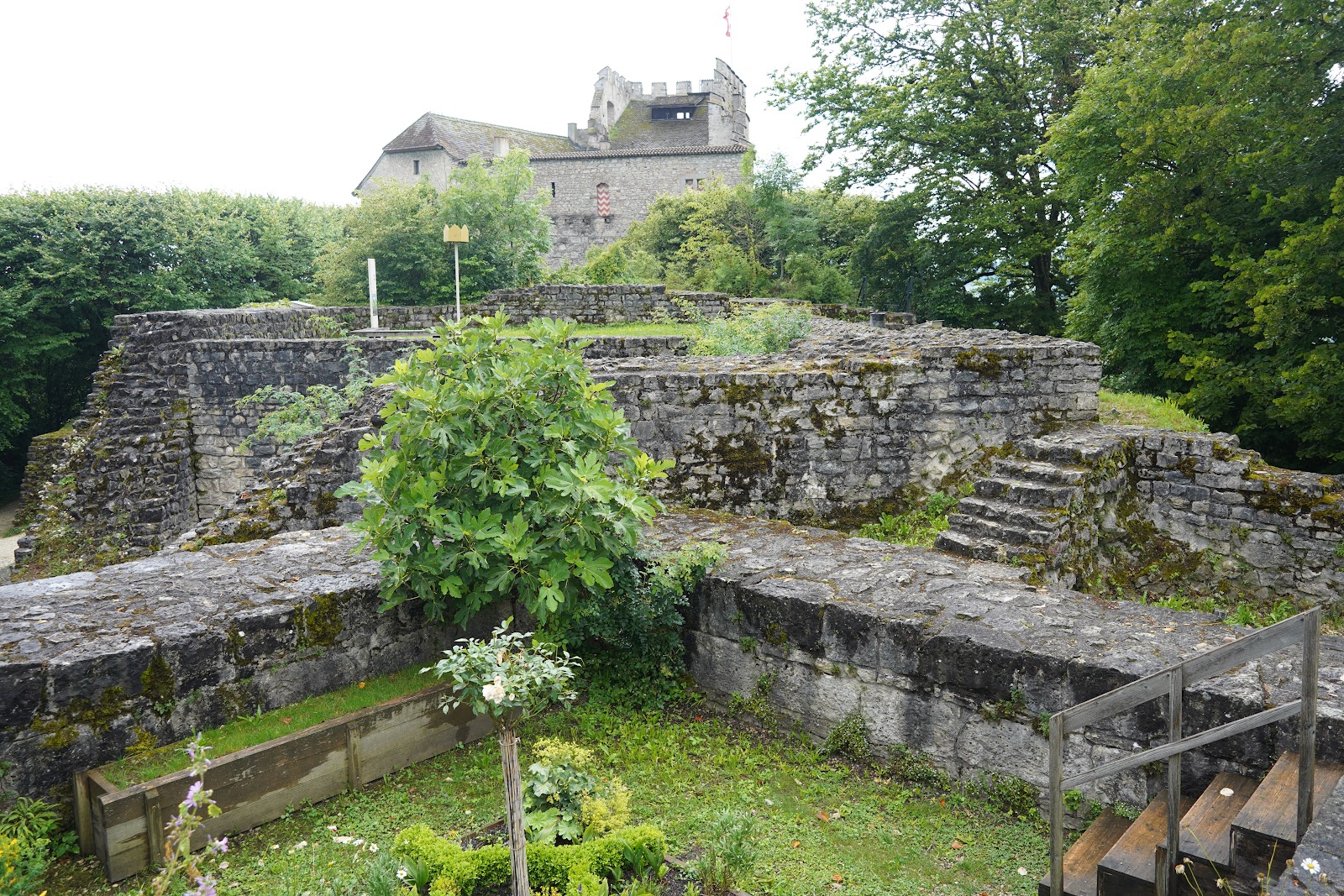


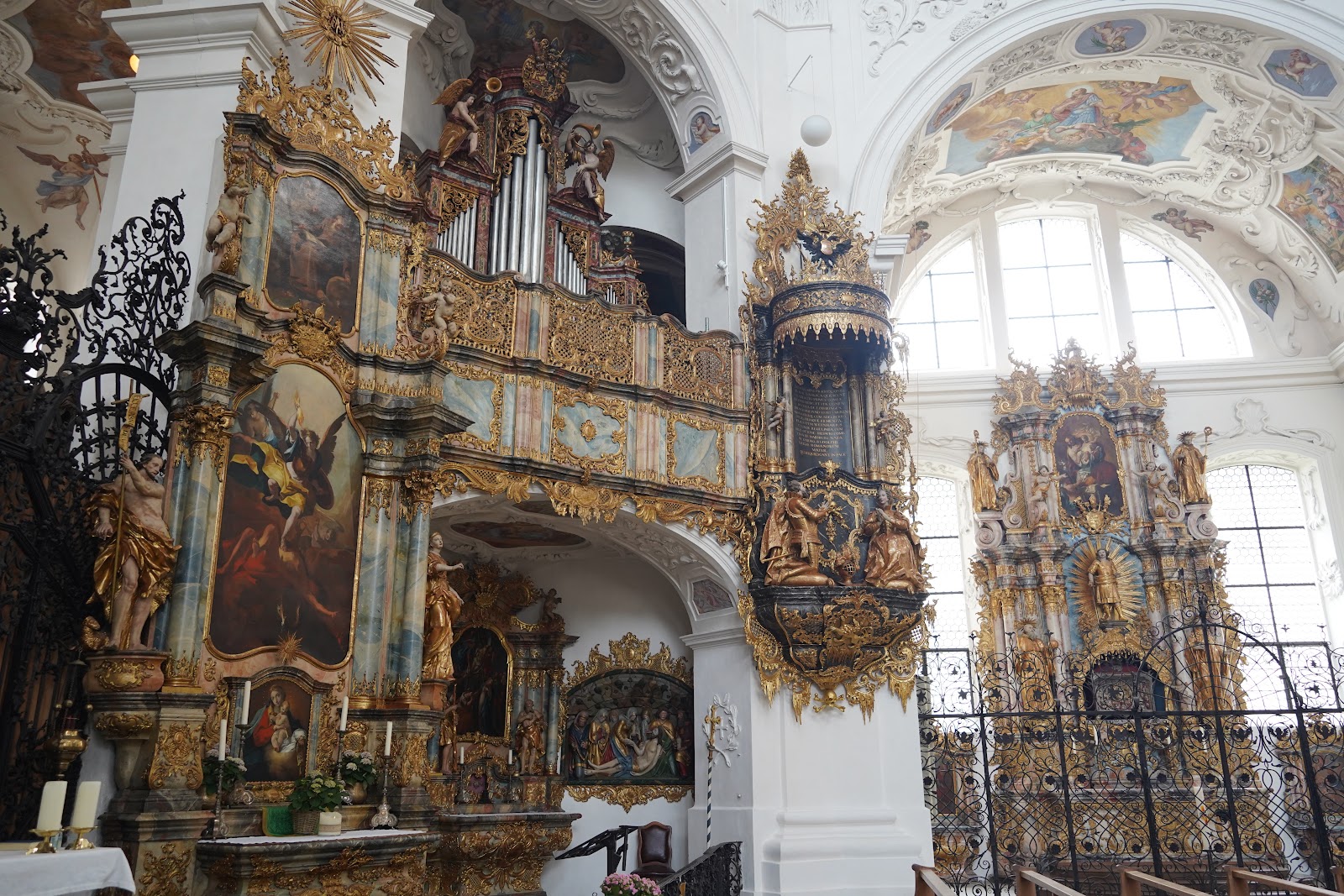












No comments:
Post a Comment